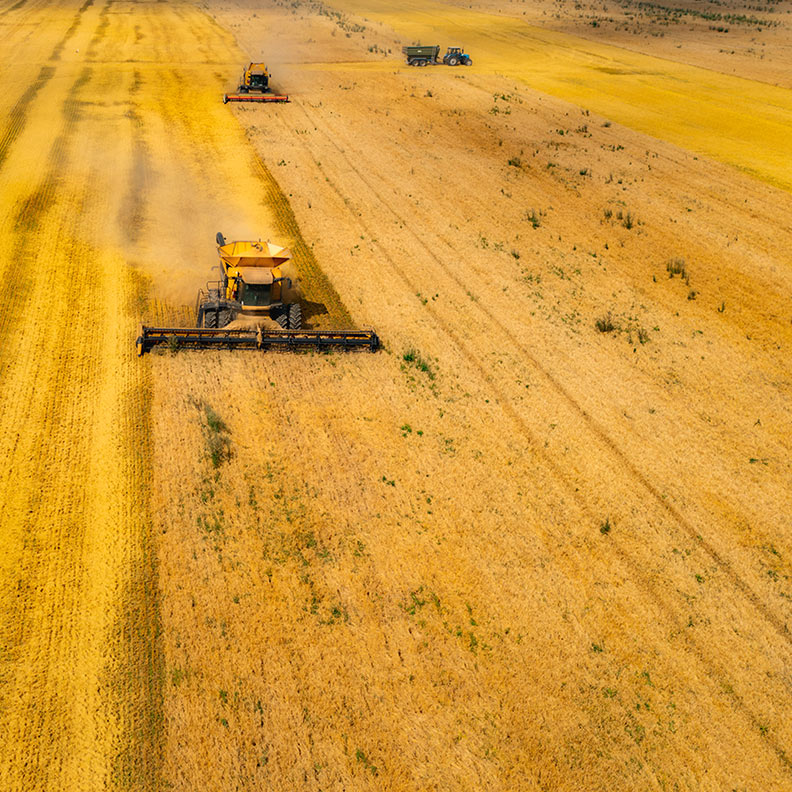The ongoing Russian invasion of Ukraine, which began in early 2022, has caused volatility for U.S. farmers and global commodity markets. Several recent developments in the conflict have heightened that volatility.
On July 17, 2023, Russia terminated the Black Sea Grain Initiative. Prior to the termination, the deal had served an important role in allowing Ukrainian ships to depart from their home country with wheat and other grains, headed for destinations across the world. In total, more than 1,000 ships carrying roughly 33 million metric tons of crops set sail in the 12 months that the deal was in place1.
The Black Sea Grain Initiative helped ease concerns of a global food crisis, as Ukraine is a major agricultural producer, responsible for about 16% of world corn exports and 12% of world wheat exports at the onset of the invasion. With the deal no longer in place, Ukrainian exports are expected to drop, and the price of wheat is up about 10%2.
Also on July 17, Ukraine damaged the 12-mile-long Kerch Strait Bridge that connects Russia to Crimea, which serves as a major artery for Russian wheat exports. On August 5, Ukraine struck additional key bridges in the same area. Since then, Russia has responded by attacking multiple Ukrainian ports including Odesa, the country’s largest agricultural port. Operations at these locations have been interrupted, which is further delaying logistics of all crops. Around 15% to 20% of Russian oil exports also travel via these regions.
In the U.S., drought is having an impact
While global commodity markets feel the effects of the Russia-Ukraine conflict, U.S. crop conditions remain below average, despite a relatively ideal corn pollination period in mid-July.
When it comes to corn, 57% is in good/excellent condition, compared to 55% last week and 58% last year. The heaviest condition declines in the last few weeks were in the north and west parts of the Corn Belt due to ongoing drought conditions.
Meanwhile, 54% of soybeans are in good/excellent condition, compared to 52% last week and 59% last year. And only 41% of spring wheat is in good/excellent condition, compared to 42% last week and 64% last year.
As of July 28, managed money switched from being net short to now net long in corn. Other than being short wheat, managed money is net long in all other grains, live cattle, feeder cattle and lean hogs.
What to watch for
In volatile markets such as this one, watch for opportunities to lock in a strong price basis. There will likely be daily market movement updates out of the Black Sea region that are worth tracking as well.
As far as U.S. crops, soybean conditions will improve if the Corn Belt experiences any major rainfall.
Retailers are also starting to bid on 2024 inputs and fertilizer prices are decreasing year-over-year. Anhydrous is now below 2021 price levels, according to DTN3. Now is a good time to work on 2024 pro forma crop budgets to help make buying and selling decisions moving forward. As always, stay in touch with your ag banker for additional insights.

